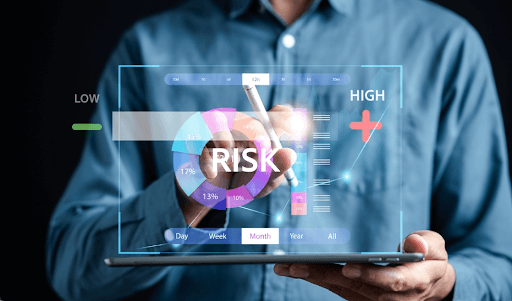
What are the Fundamentals of an Effective Risk Assessment | Kaseware
Law enforcement, security, and intelligence organizations work in high-threat environments and deal with high-stakes data every day. To protect their assets, personnel, and data, they must conduct meticulous risk management initiatives.
Risk assessments serve as a key component of a comprehensive security strategy that enables organizations to identify, evaluate, and mitigate potential threats before they materialize.
As a company founded by former FBI special agents with deep expertise in case management systems and data analytics, Kaseware understands the critical importance of accurate, effective, and actionable risk assessments.
In the following article, we’ll walk you through some of the fundamental steps to conduct an effective risk assessment, drawing from industry best practices. But keep in mind that risk is a deceptively complex thing.
The Importance of Risk Assessments
Risk assessments are fundamental for identifying both physical and cyber-related vulnerabilities and threats to an organization. By systematically analyzing potential risks, organizations can proactively address issues that might otherwise lead to significant security breaches or operational disruptions.
This process is crucial for law enforcement, intelligence, and security organizations, where the cost of failing to mitigate risk is exceptionally high.
Key Benefits of Risk Assessments
While understanding the importance of risk assessments is an essential part of creating a resilient security framework, recognizing the various advantages that risk assessments offer to law enforcement and intelligence agencies is equally important.
These key benefits underscore why risk assessments are indispensable for mitigating existing and potential dangers and safeguarding critical assets:
- Threat Identification: Pinpoint potential threats to preemptively mitigate them.
- Vulnerability Analysis: Recognize and address weaknesses in your security framework.
- Informed Decision-Making: Facilitate strategic planning and resource allocation.
- Regulatory Compliance: Ensure adherence to applicable laws and standards.
- Operational Continuity: Enhance resilience against unforeseen events.
Fundamentals for Conducting a Risk Assessment
Conducting a thorough risk assessment is a very detailed and comprehensive process.
With this general approach, you can begin to understand and systematically identify, evaluate, and address potential risks within your organization. However, there are many more additional tools, resources, and training to fully implement a formal risk assessment process.
Whether you’re new to risk assessments or looking to refine your approach, consider these steps.
Consider the Scope and Objectives
Begin by outlining the scope of your risk assessment. Determine the specific areas, assets, or operations that need to be evaluated.
Clearly define the objectives of the assessment to ensure alignment with organizational goals.
Identify Assets and Resources
Catalog all critical assets and resources within the scope. This includes physical assets (e.g., facilities, equipment), information assets (e.g., databases, confidential documents), and human resources (e.g., personnel, stakeholders).
Identify Potential Threats
Identify and list any potential threats that could impact your assets. These threats could be internal (e.g., insider threats, employee misconduct) or external (e.g., cyber-attacks, natural disasters).
Assess Vulnerabilities
Next, evaluate the vulnerabilities associated with each identified asset. Consider such factors as:
- Existing security measures
- Potential weaknesses
- Historical data on past incidents.
Determine the Likelihood and Impact of Each Threat
For each identified threat, assess the likelihood of its occurrence and the potential impact on your organization.
Use the quantitative and qualitative methods below to rank threats based on their probability and severity:
- Likelihood Assessment: Determine the probability of each hazard occurring based on historical data and current trends.
- Impact Assessment: Evaluate the potential consequences of each hazard, considering factors such as financial loss, operational disruption, and reputational damage.
Analyze and Prioritize the Risks
Combine the likelihood and impact assessments to prioritize risks.
Create a risk matrix to visualize and categorize risks as high, medium, or low priority. This step is crucial for focusing resources on the most significant threats.
Develop Risk Mitigation Strategies
For the highest-priority risks, develop strategies to mitigate their impact.
These strategies can include:
- Preventive Measures: Implement policies, procedures, and technologies to prevent the occurrence of identified risks.
- Response Plans: Develop response plans to minimize the impact of risks that do occur. This includes incident response protocols and communication plans.
For optimal results, tailor your strategies to address the specific nature and priority of each risk.
Document and Communicate All Findings
Thoroughly document the risk assessment process, findings, and mitigation strategies. Ensure that all stakeholders are informed and completely understand their roles in the risk management plan.
Monitor and Review
Risk assessment is not a one-time task but an ongoing, collaborative process, that should include all the key stakeholders throughout your organization.
Regularly review and update your risk assessment to adapt to new threats and changes within your organization. Utilize tools and platforms like Kaseware to streamline and enhance your ongoing efforts beyond risk management.
Risk Evaluation
Once the risk analysis is complete, it’s essential to compare the results against your organization’s established guidelines and risk tolerance levels. This process, known as risk evaluation, helps determine whether the existing controls are adequate or if additional measures are needed.
Regular risk evaluations ensure that the organization remains prepared for emerging threats and can adapt its risk management strategies accordingly.
Follow these key risk evaluation steps to help prioritize actions and allocate resources effectively:
- Compare Against Standards: Ensure that identified risks align with industry standards and regulatory requirements.
- Assess Risk Appetite: Determine if the level of risk aligns with your organization’s risk tolerance and appetite (the amount of risk your organization can endure without needing to address it).
- Prioritize Actions: Focus on high-priority risks that pose the greatest threat to your organization.
- Allocate Resources: Efficiently allocate resources to address the most critical risks first.
Ensure Ongoing Safety, Security, and Preparedness with Kaseware
Conducting a comprehensive risk assessment is a vital component of an effective, comprehensive security strategy. The fundamentals above guide many law enforcement, intelligence, and security organizations to systematically identify, evaluate, and mitigate risks in order to enhance their overall security posture.
At Kaseware, we understand there are many complexities to risk management, but this is just one aspect of managing your security efforts. Kaseware offers tools and expertise to support many efforts beyond risk management.
For further insights and practical strategies, we recommend downloading our Insider Threat Guide. Additionally, we suggest reading our article on how the White House handles insider threats, featuring insights from John Gill, our Executive Vice President of Strategic Projects and former Chief Security Officer at the White House.
Learn More
Contact us to learn more about how Kaseware’s investigative case management platform can complement your security metrics and help your organization stay ahead of evolving threats.








